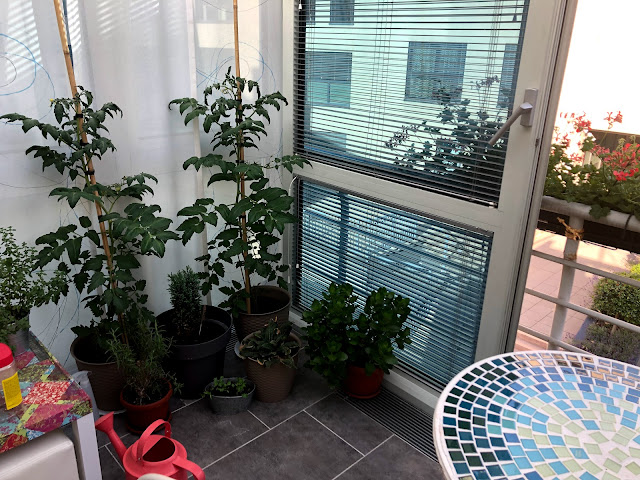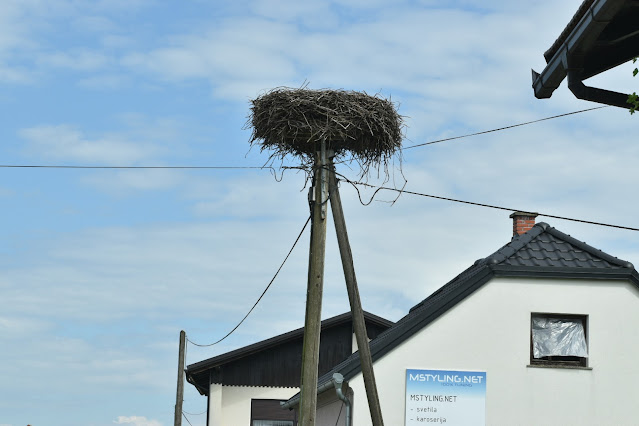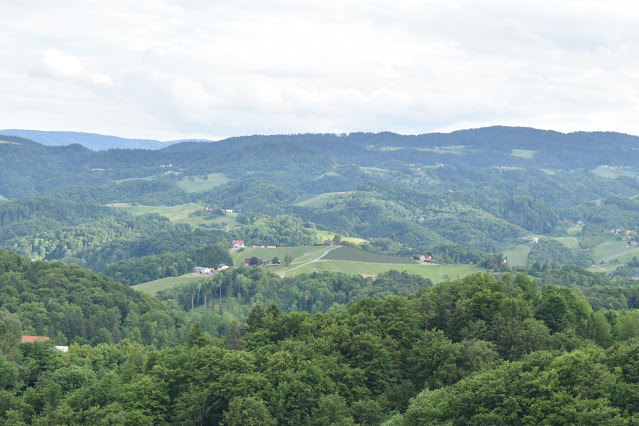I haven't posted anything in about three weeks - maybe longer. We have been very busy with the branch, and that's why I haven't done much playing around, which is the stuff that is most fun to post. However, we did get out a few times and I will now post about that.
I also gave two talks in church in this period of time. The focus of them was to build unity within the branch and try to help the members see that backbiting isn't doing them any good.
There are several cultural venues in Maribor, and we have been sad that they were all closed during the COVID pandemic. We got to one ballet (Liz loves ballet - I prefer opera) when we first arrived in Slovenia, but that was the last one. Well, they are now opening up again, and we got tickets to a string quartet performing just a short walk from our apartment. I really enjoyed their performance, even though they had three ancient instruments and one modern one - modern instruments have improvements to make them louder and the cello overpowered the other strings. Ancient instruments were built with the best materials available at the time, but more importantly only the rich and famous could afford musicians, so small, intimate performances were the rule of the day. The need for louder instruments only came after larger audiences became the norm.
This performance hall was built in the early nineteenth century, when the Austro-Hungarian Empire ruled this part of the World. The architecture was very elaborately decorated. The rounded shape of the stage continued back across the ceiling, and you can see the elaborate carvings and patterns. In the 20th century, the building was used less and less, and finally fell into disrepair. Only about twenty years ago the city restored it and re-opened it for small concerts. So that was a fun evening.
We had a Zone Conference, which is where the mission president and his assistants come to Slovenia to meet with all the missionaries. This was the first time in a long while when the president could come visit us.
President Field wanted a picture with all of us, but I hadn't yet joined the group and President Field was trying to rig up a chair to hold his cellphone camera. I had nothing else to do and remembered that my cellphone was in my pocket, so I took a photo of all the young missionaries. Sister Field had her head turned away from the camera and Elder Taylor is hidden behind Sister Williams. But this is our team. Liz is standing in front of our tallest, Elder Daw. Left to right - The Sisters: Hart, Back, Williams, Ashurst, King, Castleton, Yost, and Field. Left to right - The Elders: Kunzler, Poulos, Miller (AP), Christenson (AP), Handley, Taylor, Daw, Miller.This is a common item in the grocery stores here - mixed mushrooms. Sometimes there are 3 varieties, but more commonly there are only 2. Soups are very popular in Slovenia, and most cooks would cook a big pot of soup using whatever is available. My favorite is a bushy mushroom they only have in the spring. Later, there will be other kinds.
Saturday, we had to do apartment inspections across Slovenia, so we decided to stop at the Beekeeper store and an old monastery. The bee store caters to serious bee farmers, and seemed to be doing a land office business.
The store is in an old carriage house behind a huge mansion/castle that is now abandoned. Slovenes traditionally painted funny, religious, or historic scenes on a board in front of each hive. The one reproduced above the windows is a bunch of guys making girl wine - a joke, of course - girls are sweet. A girl's feet are just going into the grinder, while her head and shoulders are just coming out. And on the left, a man is carrying another girl on his shoulder so they can add her sweetness to the brew.Notice the notch at the bottom-center of the bee board above? All the tourist bee boards have this, but in actual use the notch is not on the painted board. Here is what they actually look like on the hive.
This is the front of an inhabited beehouse they use for teaching beekeeping. In Slovenia, you have to pass a course and have a certificate before you are allowed to keep bees. The bees come in and out of the hives through a notch at the bottom of the hive. The painted boards are just above that and attached to the bee house rather than the actual hive, which is fastened inside the bee house so the beekeeper can open it from the back.The bee boards on the hive above, left to right:
- A carved depiction of the bees gathering around the queen.
- A man with his trousers hanging on a pole, and all the washer-women trying to get them first.
- Three farmers gathering a swarm of bees from a tree.
- A man carrying a cross, with his woman riding on the cross. Probably a marriage trial.
- a beehouse, a man playing a violin, a Saint sitting on a rock, the beeman's wife in front of her house.
- A woman doing laundry while a devil reaches into her hair. Very dark!
Liz wanted to get a full-size bee board to use in decorating one of the bedrooms in our new house. Inside the store, we found a display with full-size boards.
Bee house display in the store. Sadly, these were not for sale, because they are full size.- Another painting of capturing a swarm of bees. Another man plays the fiddle while they work.
- Two bears arguing over a bee board while the keeper shows his frustration
- A man carrying a beehive on his back, but with a girl inside it. He's approaching the church door.
The monks were educated men who knew Latin as well as the local language. Their main job was to copy books, this being in the days before the printing press was invented.
This is an example of an "illustrated text", referring to the fancy leading letter of paragraphs and chapters. Some of it is quite complex. I guess it relieved the boredom of just copying.This one is music, and I've never seen a text like this. I believe it is for a choir doing a Gregorian chant?
The monastery had the largest library, second only to the Vatican, in the World. Nobody knows where the books went after the monastery shut down in the early 19th century, but it is assumed they were moved to worthy places.
The long building to the left is built on the outside wall and had rooms for Monks. They have a potter there now, and we bought a traditional pan for baking policinka, a festival cake similar to the pogacha Liz has made since we were young.
The tall tower in the distance was a defensive tower. The one with the steep roof that is flat along the top is the funeral chapel. They had a service there when Monks died, and then they were buried without marker, wrapping or casket so that they could hasten the Biblical phrase, "unto dust thou shalt return". It also allowed them to have a very small graveyard because it was easy to dig through prior burials.
This is the view from the potter's room, across the site. The stones in the ground mark where a covered walkway used to be. The mounds were Monks' rooms.The monks lived a solitary life of silence, chastity, and seclusion. There were 12 full monks, and 16 serving monks here. The full monks each had their own suite of 3 rooms. They spent their days copying books, writing, and studying. They had two meals a day, plain food prepared by the serving monks. If they were heard to speak during a meal, they had to leave the food behind and return to their room. The serving monks became famous herbalists, and the gardens just outside the ruins still grow both common and rare herbs. They also farmed at a location down the valley where the sounds of planting, weeding and harvesting wouldn't disturb the full monks.
My overall impression is that it is a peaceful, calming place. But I wouldn't give up my woman to live there.





































